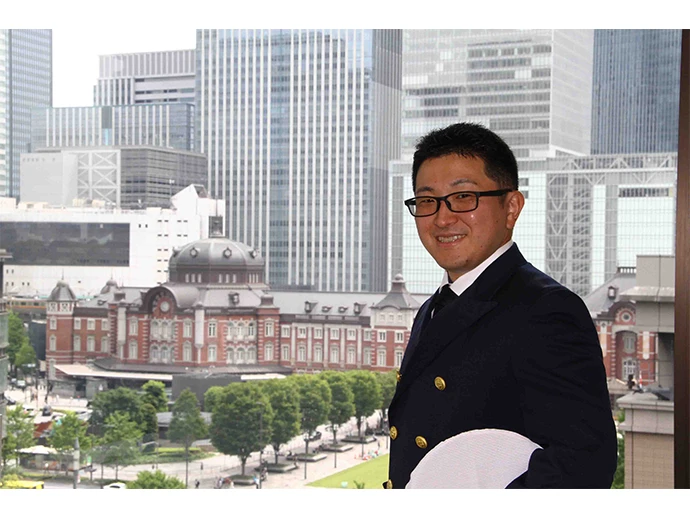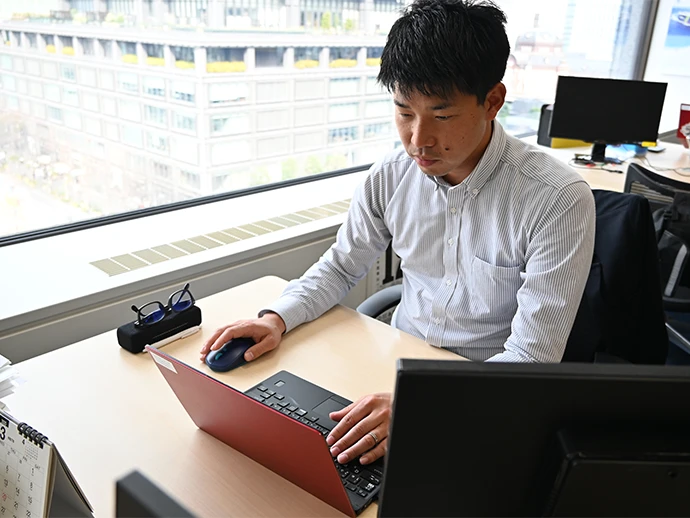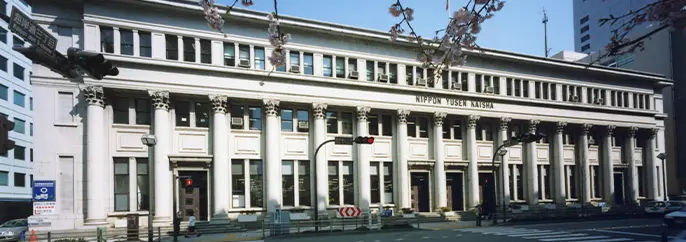Bringing Onboard Expertise to New Business Fields: The True Appeal of Life as a Marine Engineer
Released : Jun. 20, 2025
Updated : Oct. 20, 2025
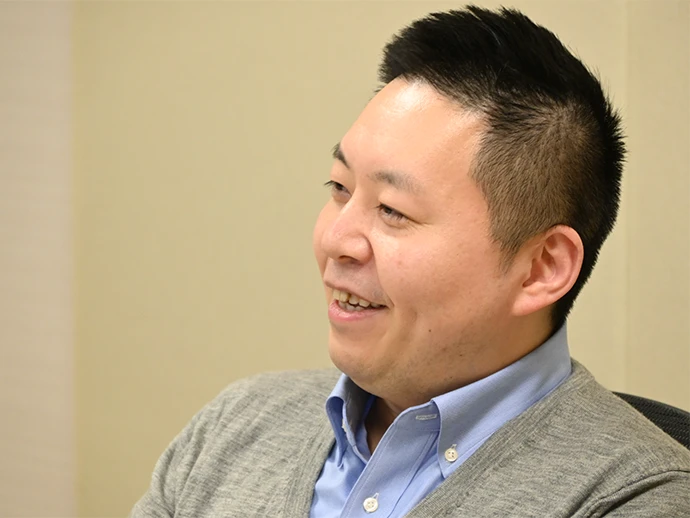
NYK Line has around 600 marine engineers, half of whom serve as engineers responsible for the maintenance and management of ship machinery. But their work isn’t confined to ships. At NYK, which aims to cultivate “generalists with strong core expertise,” there are diverse paths for engineers to apply the knowledge and intuition they’ve developed at sea. Takahiro Ueda, from the Maritime New Business Extensive Support Team of the Marine Group, is forging one such path.
Fascinated by the Power of Ship Engines – and Drawn to the Seas of the World
I grew up in the mountainous city of Takayama in Gifu Prefecture, Japan, far from the ocean. I believe I was in junior high or high school when I first came across a ship’s engine by chance — and I was blown away by its sheer size. It was nothing like a car engine. I had hardly seen an actual ship in person, so I was struck by the thought, “There’s a whole world like this out there.” That sense of wonder led me to enroll in a maritime university to study mechanical engineering for ships.
At first, I considered going into shipbuilding, but after getting the chance to board a ship during my university days, I realized that I might actually enjoy operating ships more than building them. At the time, I had never been abroad, so I also saw working on a ship as a way to see the world and broaden my horizons.
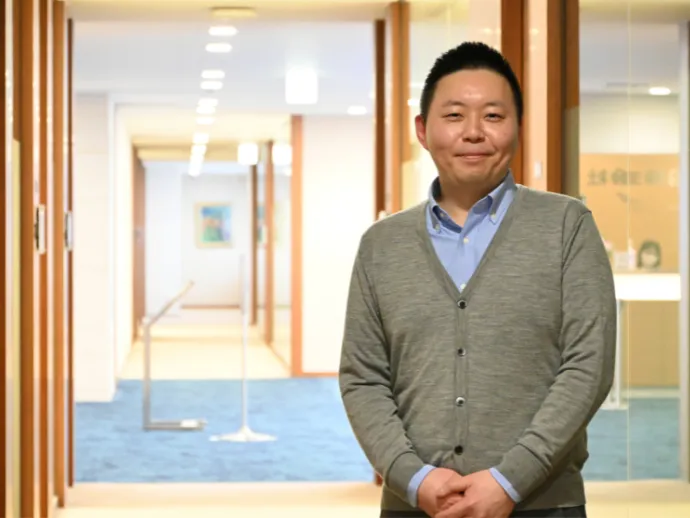
Takahiro Ueda
Marine Group, Maritime New Business Extensive Support Team
“So, This Is What It Means to Be a Seafarer!” Experiencing Global Voyages as Part of a Multinational Team
In my case, I spent about three years after joining NYK serving aboard various types of vessels, including container ships. After a year of shore duty, I returned to sea for another five years, mainly on car carriers and LNG ships. Then I returned to land again — and this pattern of alternating between onboard and shore assignments has continued throughout my career.
There are truly countless shipping routes and vessels around the world, but my first assignment on a container ship left the strongest impression on me. We departed from Busan, South Korea, passed through Singapore, crossed the Arabian Sea, transited the Suez Canal into the Mediterranean, and finally reached Spain — before returning along the same route. The round trip lasted about two months. I still clearly remember how, when I tried speaking to my Romanian supervisor in my broken English, he asked me, “Ueda, what language are you speaking?” Fortunately, one of the electrical engineers took a liking to me and would ask each evening, “Want to watch Toranaga?” — offering me a Japanese historical drama featuring a shogun.
I didn’t realize it at the time, but the show was actually an earlier version of what was recently remade as “Shōgun.” I think he showed it to me as a kind gesture because I was Japanese. Through those kinds of exchanges, I gradually became able to communicate with the multinational crew in English. When I disembarked from that vessel, I remember feeling genuinely sad to leave.
I also served aboard a car carrier. Departing from Japan, we passed through Thailand and Singapore, circled around Australia clockwise, returned to Singapore and Thailand, and continued westward — through the Mediterranean to the U.K., then across the Atlantic to the United States, around the Gulf of Mexico, through the Panama Canal, and finally back to Japan. It was a full-fledged round-the-world route.
At each port of call, engineers primarily perform engine maintenance. Since the engine runs continuously during voyages, port time is the only chance we get to shut it down and maintenance it — those moments are when our skills are truly tested. Still, of course we want to go ashore now and then. So we engineers would coordinate among ourselves, taking turns: “I’ll go ashore at the next port, so I’ll take care of your tasks this time,” or “You can take the next one.” I remember one colleague bringing back chocolate for us when he went ashore in Belgium.
Ships are places where people from all over the world come together to form one team. Naturally, your communication skills are sharpened. If interpersonal relationships break down, the team won’t function — and I think most seafarers instinctively understand that.
When engineers move into shore-based roles, it’s common for them to get involved in vessel management operations. For example, ships undergo regular inspections much like automobile inspections, and one task is to plan how maintenance will be carried out in preparation. As engineers, we understand firsthand what kind of maintenance is needed and how it’s done on board.
In my case, I also worked on the “ship owner” side, supporting customers when vessel trouble occurred. That meant explaining what kind of malfunction had happened, how serious it was, and proposing a solution. At NYK, engineers who apply their sea-based experience and mechanical knowledge in client-facing roles are called “engineering-sales officers.” It’s a way for us to make the most of what we’ve learned at sea.
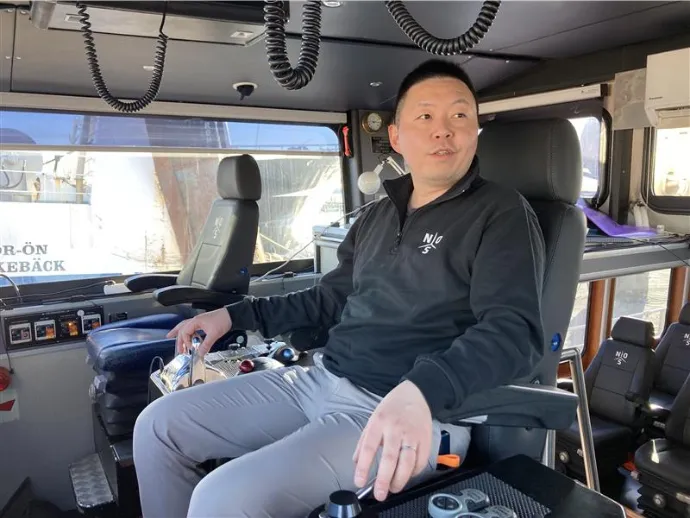
Of his nearly 20-year career at NYK, Ueda has spent about 10 years at sea.
Lower Energy Use, Higher Output — Offshore Wind Power as the Best of Both Worlds
I am currently engaged in several new business initiatives, including the operation of the Akita School of Wind and Sea — a training center for offshore wind farm workers. In addition, I’m involved in the planning of offshore data centers and a joint industry-academia research project on seafarer uniform design.
My main focus is offshore wind power. Globally, this field began to take off around 2012 or 2013. In Japan, commercial operations started in January 2023. On land, the size of wind turbines is physically limited, but offshore, large-scale installations are possible. For example, some turbines reach nearly 300 meters from base to blade tip. In Europe, there are areas where 100 or even 200 of these massive turbines stand in neat rows.
The largest concentration is in the North Sea. Sailing through the area east of the U.K., past the Strait of Dover, I once saw a vast stretch of pure white wind turbines lining the horizon. I remember thinking, “What on earth is this?” At the time, I never imagined I would one day be involved in this industry — so now, years later, to see that view linked with my current work feels strangely full circle.
Interestingly, the same kind of connection is emerging in another project: offshore data centers. As available land for onshore data centers grows scarce, the idea of placing them on the sea is gaining traction. At sea, natural cooling from surrounding seawater improves thermal efficiency. And if wind turbines are also installed nearby, it becomes easier to lay down power cables and supply electricity. To me, this is a best-of-both-worlds concept, and I believe strongly in its potential.
What Is a CTV — Crew Transfer Vessel for Offshore Wind Operations?
In NYK’s offshore wind-related projects, we’re responsible for owning and managing CTVs, or crew transfer vessels, that transport technicians to wind turbines for construction and post-operation maintenance work. Unlike on land, you obviously can’t drive a car out to the turbine, so CTVs fill that crucial gap.
However, my previous onboard experience doesn’t directly translate to managing CTVs. Their structure and scale are entirely different. A CTV is about 27 meters long. In contrast, oceangoing ships are usually 200 to 300 meters, and large container ships can even exceed 400 meters. This field was completely new to me, so at first, I was a bit confused. But we formed a flexible team and learned through open discussion and shared experience.
Once we had a clear direction for the project, the next step was to communicate that concept clearly to our clients. It’s important to explain, from a professional perspective, how safety and comfort are ensured. There are many players involved in offshore wind power projects, so articulating our value in this space is key.
Nurturing Talent in Oga, Akita — Akita School of Wind and Sea Training Center
We’re also focusing on human resource development.
One of our key bases is the Akita School of Wind and Sea training center, located within the training building of Akita Prefectural Oga Maritime High School. This center provides training for seafarers and offshore wind power workers. I’ve been involved in training programs such as GWO BST5 (for offshore wind technicians), STCW basic safety training (for seafarers), and NYK’s own CTV simulator-based training.
In recent years, training centers like this have been established across Japan, but co-locating one within an existing high school is something unique to NYK. Students can see professionals undergoing full-scale training right next to their regular classrooms. We hope this will spark curiosity — “There’s a job like this?” — and help them realize that ship operations, offshore wind, and maritime training are all part of the real working world, not something far removed from daily life.
If this leads them to consider a maritime career in the future, that’s a great outcome. Even if it doesn’t lead directly to employment, we’d be glad if this experience broadens their understanding of possible career paths. This initiative was made possible through many connections, and I want to ensure it grows into something that shapes the future in a meaningful way.
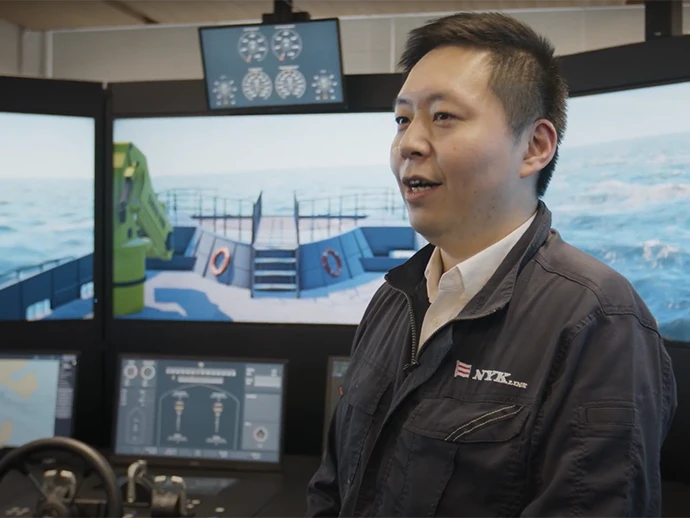
Conducting CTV simulator training at the Akita School of Wind and Sea training center
What Keeps Me Motivated While Taking Part in a Wide Range of New Projects
I’m also involved in the NYK Digital Academy, a training program designed to foster business leaders who take initiative in driving innovation and reform. In one project, we collaborated with students from Tama Art University on a joint research initiative focused on the theme of “well-being for seafarers,” specifically exploring workwear design.
We consider questions like how to incorporate a sense of pride into uniforms, or how to improve common issues such as poor breathability or easily visible stains. While it might seem easier to just purchase ready-made gear, we believe there’s real value in thinking through the design process. For example, people often admire the uniforms worn by airline maintenance crews — we’d like to create something that can inspire that same sense of pride.
People sometimes ask why I’m involved in so many different projects. Honestly, I wonder about the same thing myself sometimes. But if I had to say, I think it’s because I naturally enjoy trying new things. I tend to be the type who just jumps in and gives it a shot. Maybe that mindset fits well with new business development.
Others also ask how I manage to handle so much. But the truth is, work comes in waves. I try to take on new opportunities in the “valleys” between those waves. In fact, when I get stuck in one area, switching gears and thinking about something completely different often helps things start moving again. It’s about using the gaps between the peaks.
I’m fortunate to be surrounded by people who also love new ideas. They’re not interested in simply extending the status quo — they’re always thinking about more interesting possibilities. When I float an idea, they respond right away, and many times we end up saying, “Let’s try it.” There's a strong sense of forward momentum in our team, and I truly feel we've built something exciting.
What matters most is not thinking, “I’ll just focus on my own job” or “That’s not my area.” It’s important to take interest in the neighboring departments or the next step in the process, and to be the kind of person who can say, “Is that going to be, okay?” To the next generation, I hope they’ll keep their eyes wide open — for the sake of future possibilities.
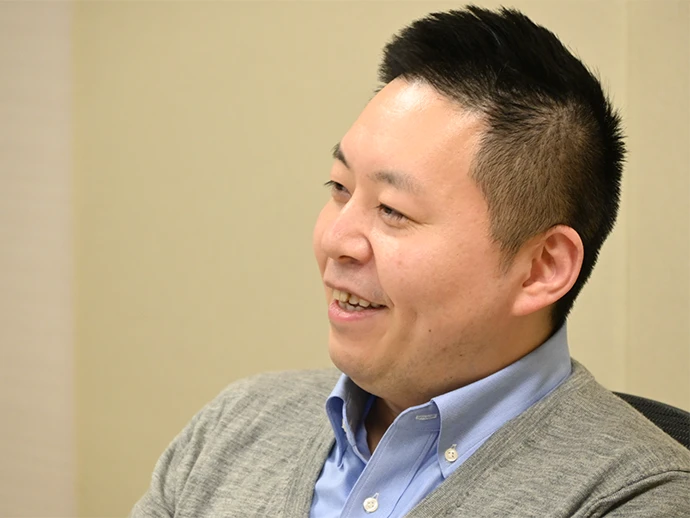
“People often think that engineers only handle engine maintenance, but on a ship we’re like all-rounders. We can actually do a wide range of things.”
A Few Days in the Working Life of Takahiro Ueda
Wednesday
09:00 – Arrive at the office
11:00 – Attend two internal meetings (CTV specs, cost review), compile materials
12:00 – Lunch break
12:30 – Travel to Tama Art University and attend presentation on joint research project “Designing Daily Life”
18:00 – Team dinner in the Hashimoto Station area
21:00 – Return home
Thursday
07:00 – Flight from Haneda to Akita
09:30 – Arrive at the Akita School of Wind and Sea training center in Oga. Attend equipment installation and host visitors, providing guidance to the simulator experience and training facilities.
Overnight stay in Akita City
Friday
10:00 – Host guests at the training center
15:00 – Return to Tokyo
Evening – Meeting with university professor, followed by New Year gatherin
